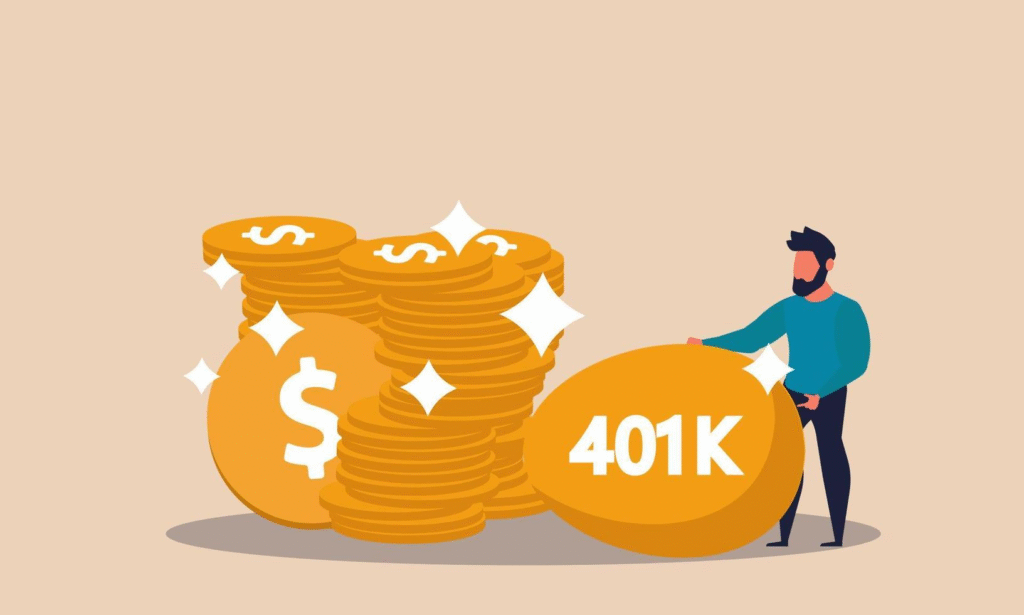Understand what a 401k loan is and its advantages

When it comes to saving for retirement, a 401(k) plan is one of the most popular tools available in the United States.
It allows employees to contribute a portion of their salary into a tax-advantaged account, often with an employer match.
But beyond retirement savings, many people don’t realize that a 401(k) can also serve as a source of borrowing through what’s called a 401(k) loan.
While it may seem like a convenient solution in times of need, it’s important to weigh the benefits and potential risks before taking this step.
What is a 401(k) Loan?
A 401(k) loan is a type of borrowing that lets you tap into your retirement savings. Instead of borrowing from a bank or credit union, you’re essentially borrowing from yourself.
The amount you withdraw is taken from your account balance and repaid, with interest, back into your own retirement account.
Typically, you can borrow up to 50% of your vested account balance, or a maximum of $50,000, whichever is lower.
Repayment is usually structured over a period of five years, although a longer term may apply if the loan is used to purchase a primary residence.
How Does a 401(k) Loan Work?
The process of obtaining a 401(k) loan is generally straightforward. Below, we’ve provided a complete step-by-step guide, detailing every step of the application process!
- Application: you request a loan through your plan administrator;
- Loan Amount: the available amount is based on your vested balance;
- Repayment: payments are made through payroll deductions, making it easier to stay on track;
- Interest: you pay interest on the loan, but unlike traditional loans, the interest goes back into your account.
Because it’s your own money, there’s no credit check, and the loan doesn’t appear on your credit report. This makes it accessible to people who might struggle to qualify for traditional financing.
Pros of a 401(k) Loan
1. Easy Access to Funds
One of the biggest advantages is the quick and simple access to cash. Unlike applying for a personal loan or home equity line of credit, the approval process is faster and less restrictive.
2. No Credit Check
Since you’re borrowing your own savings, there’s no impact on your credit score. This can be a lifesaver if you have poor credit or are concerned about inquiries showing up on your credit history.
3. Paying Yourself Back
The interest on a 401(k) loan doesn’t go to a bank, it goes back into your retirement account. In essence, you’re paying yourself rather than a lender.
4. Lower Interest Rates
The interest rates are generally lower than those on credit cards or unsecured personal loans. This makes it a cheaper alternative to high-interest borrowing.
Cons of a 401(k) Loan
1. Risk to Retirement Savings
The biggest downside is that you’re reducing your retirement nest egg. Money withdrawn from your 401(k) stops working for you, meaning it won’t earn investment returns during the loan period.
2. Repayment Challenges
If you leave your job, voluntarily or not, the outstanding loan balance may become due in full within a short period (usually 60 to 90 days). If you can’t pay it back, the unpaid amount is treated as a withdrawal.
3. Taxes and Penalties
Failure to repay on time can trigger taxes and a 10% early withdrawal penalty if you’re under age 59½. This can turn a temporary solution into an expensive mistake.
4. Double Taxation on Interest
Although you’re paying interest to yourself, it comes from after-tax dollars. Later, when you withdraw those funds in retirement, they’ll be taxed again, which effectively means double taxation on the interest portion.
Is a 401(k) Loan a Good Idea?
Whether a 401(k) loan is right for you depends on your situation. It can be a short-term lifeline in emergencies, especially when compared to high-interest debt.
However, it’s not risk-free. Using retirement savings to cover current expenses can undermine long-term financial security.
A good rule of thumb is to consider a 401(k) loan as a last resort, something to be used only when other options are unavailable or significantly more costly.
Before deciding, it’s wise to explore alternatives such as personal loans, refinancing, or even negotiating payment terms on existing debts.
Final Thoughts
A 401(k) loan offers both convenience and pitfalls. On the plus side, it provides quick access to cash, no credit barriers, and the chance to repay yourself instead of a lender.
On the downside, it can jeopardize your retirement savings, carry tax consequences, and put you at risk if your job situation changes.
Ultimately, if you’re considering a 401(k) loan, take the time to review your financial goals, explore other funding options, and consult with a financial advisor.
Remember, the purpose of a 401(k) is to secure your retirement, and borrowing from it should be done with caution.

